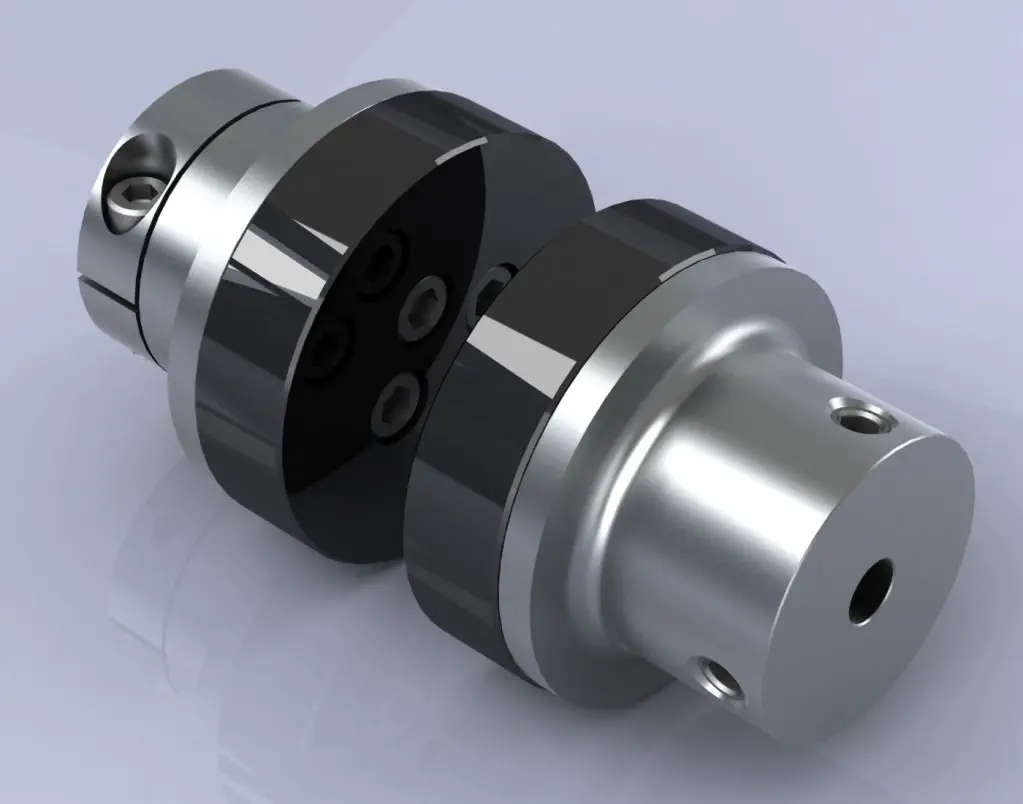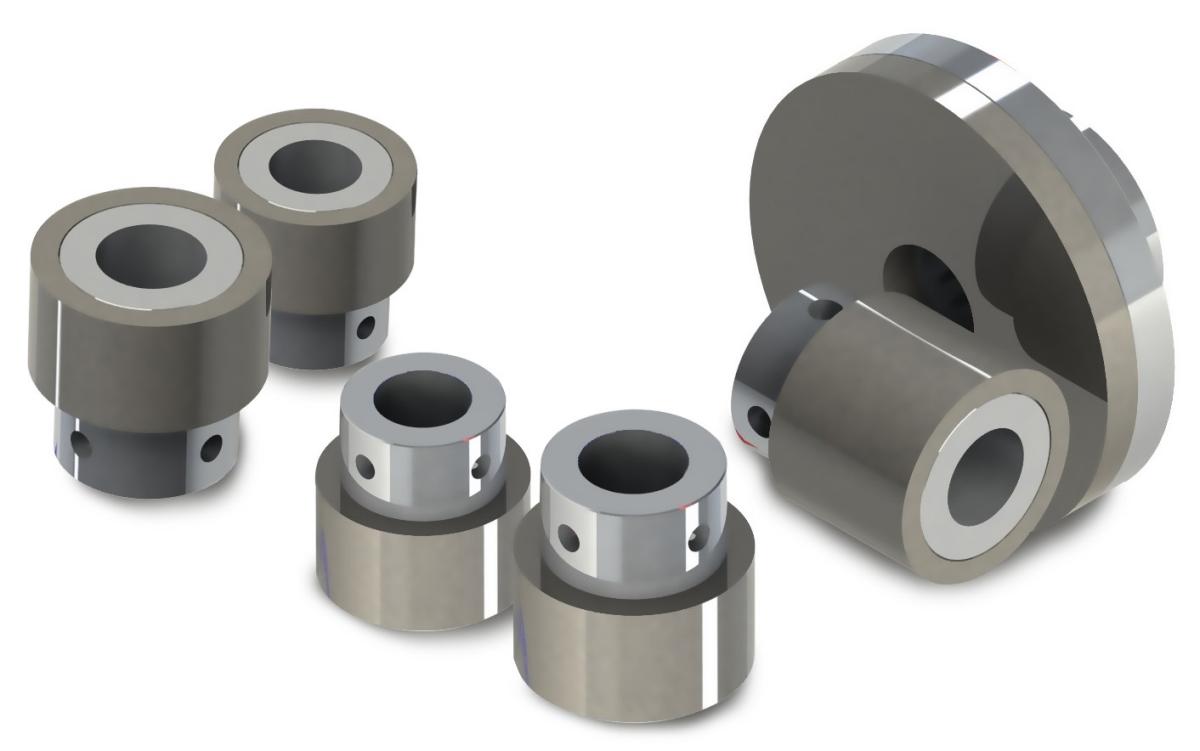Product Description
Made in China custom Magnetic Coupling with High Quality
Introducing our custom Magnetic Coupling, proudly made in China with the highest quality standards. This coupling is designed to provide exceptional performance and reliability, making it an ideal choice for various applications.
Our Magnetic Coupling is crafted using rare earth magnets, ensuring a strong and durable connection. It offers a secure and efficient transfer of power between shafts, eliminating the need for physical contact. This feature not only reduces wear and tear but also minimizes the risk of contamination, making it suitable for sensitive environments.
Ordinary magnetic coupling, working temperature less than 80 ºC, without acid or alkali corrosion environment. Please contact customer service for customization.
| NO. | ФA | ФB | C | ФD | Фa | Фb | Фd | E | F | H | J | K | L | M | P | S | T | V | Фh | Фx | torqueN.m |
| YCL045 | 45 | 38 | 50 | 19 | 33 | 27 | 12 | 32 | 6 | 38 | 5 | 4 | 60 | 4 | 3 | 2 | 5 | 39 | 31 | 65 | 2 |
| YCL060 | 60 | 47 | 58 | 24 | 43 | 35 | 15 | 38 | 8 | 46 | 6 | 5 | 70 | 5 | 4 | 2 | 6 | 48 | 40 | 90 | 6 |
| YCL080 | 80 | 58 | 65 | 28 | 58 | 48 | 20 | 40 | 8 | 50 | 7 | 6 | 80 | 6 | 5 | 4 | 8 | 51 | 55 | 115 | 12 |
| YCL100 | 100 | 70 | 100 | 35 | 72 | 58 | 25 | 72 | 10 | 83 | 8.5 | 7 | 117 | 8 | 6 | 6 | 10 | 84 | 68 | 142 | 45 |
| YCL120 | 120 | 70 | 105 | 35 | 86 | 70 | 30 | 72 | 10 | 86 | 8.5 | 7 | 125 | 8 | 8 | 8 | 10 | 88 | 82 | 165 | 84 |
If customization is required, please contact customer service
/* January 22, 2571 19:08:37 */!function(){function s(e,r){var a,o={};try{e&&e.split(“,”).forEach(function(e,t){e&&(a=e.match(/(.*?):(.*)$/))&&1

Are there any Safety Considerations or Guidelines for Using Magnetic Couplings in Hazardous Environments?
Yes, when using magnetic couplings in hazardous environments, there are several safety considerations and guidelines that should be followed to ensure the safety of personnel and equipment. Hazardous environments may involve flammable, explosive, or corrosive substances, and it’s crucial to address potential risks. Here are the safety considerations and guidelines:
- Material Selection:
Choose magnetic couplings constructed from materials that are compatible with the hazardous substances present in the environment. For example, some chemicals may be corrosive, so the coupling’s materials must resist corrosion to maintain integrity.
- Sealing:
Ensure that the magnetic coupling provides a hermetic seal to prevent fluid leakage and the release of hazardous substances into the environment. The containment shell should be designed to withstand the pressures and temperatures of the specific application.
- Explosion-Proof:
In environments where flammable or explosive substances are present, consider using explosion-proof magnetic couplings. These couplings are designed to prevent the ignition of flammable gases or vapors in the event of a fault.
- Compliance with Regulations:
Ensure that the magnetic coupling meets all relevant safety and industry standards for hazardous environments. Compliance with regulations, such as ATEX or IECEx, is essential to ensure the coupling’s suitability for use in specific hazardous locations.
- Environmental Conditions:
Evaluate the environmental conditions of the hazardous area, including temperature, pressure, and chemical exposure. The magnetic coupling should be rated and designed to withstand the specific conditions of the environment.
- Grounding:
Properly ground the magnetic coupling and the associated equipment to dissipate any static charges and prevent sparks that could ignite flammable substances.
- Installation and Maintenance:
Follow the manufacturer’s recommended installation and maintenance procedures to ensure the magnetic coupling functions correctly in the hazardous environment. Regular inspections and maintenance are essential to identify and address any potential issues.
- Training and Awareness:
Provide training to personnel working in the hazardous area about the risks associated with magnetic couplings and the proper procedures to follow in case of any abnormalities or emergencies.
It is crucial to consult with experts or engineers experienced in hazardous environments to ensure that the magnetic coupling is appropriately selected and installed for the specific application. Following these safety considerations and guidelines will help mitigate risks and ensure safe operation in hazardous environments.

What are Some Real-World Examples of Successful Magnetic Coupling Implementations in Different Industries?
Magnetic couplings have found successful implementations in various industries, offering reliable and efficient solutions for a wide range of applications. Here are some real-world examples of their successful use:
- Chemical and Petrochemical Industry:
In chemical and petrochemical processes, magnetic couplings are employed in pumps and agitators to prevent fluid leakage and ensure a hermetically sealed system. This eliminates the risk of hazardous chemicals escaping into the environment and protects the integrity of the process.
- Pharmaceutical Industry:
In pharmaceutical manufacturing, magnetic couplings are used in mixers and reactors. The hermetically sealed design prevents contamination and allows for sterile operation, ensuring the highest level of product purity and quality.
- Food and Beverage Industry:
Magnetic couplings are used in pumps and mixers for food and beverage processing. The hermetic sealing feature ensures that there is no product contamination, meeting stringent food safety standards and maintaining the integrity of the processed food and beverages.
- Automotive Industry:
In automotive applications, magnetic couplings find use in cooling systems and turbochargers. Their high efficiency and reliability improve engine performance, and their non-contact design eliminates the need for lubrication, reducing maintenance requirements.
- Renewable Energy:
In wind turbines, magnetic couplings are used to transmit power from the turbine rotor to the generator. The maintenance-free operation and reliable power transmission make magnetic couplings a valuable component in wind turbine systems.
- Aerospace Industry:
Magnetic couplings are used in aerospace applications, such as aircraft fuel systems. Their leak-free design and tolerance to misalignment make them suitable for critical aerospace applications where safety and reliability are paramount.
- Marine Industry:
In marine applications, magnetic couplings are utilized in pumps and propulsion systems. Their ability to handle high torque and maintain efficiency at various speeds makes them suitable for different marine vessels and offshore platforms.
- Mining and Minerals:
Magnetic couplings are employed in mining equipment, such as slurry pumps. Their robust construction and tolerance to abrasive materials enhance the reliability and longevity of the mining equipment in harsh operating conditions.
These real-world examples demonstrate the versatility and effectiveness of magnetic couplings across multiple industries. Their ability to provide hermetic sealing, prevent fluid leakage, and offer reliable power transmission without mechanical wear makes them a valuable solution in critical systems where efficiency, safety, and reduced maintenance are essential considerations.

Working Principle of a Magnetic Coupling and Its Advantages Over Traditional Couplings
A magnetic coupling operates on the principle of magnetism to transmit torque from one shaft to another without direct physical contact. It consists of two rotors, an outer rotor connected to the driving shaft and an inner rotor connected to the driven shaft, with a containment shell separating them.
Here’s how a magnetic coupling works:
- Permanent Magnets:
Both the outer and inner rotors contain permanent magnets with alternating poles facing each other. When the driving shaft rotates, the magnets on the outer rotor create a magnetic field.
- Magnetic Induction:
This magnetic field induces a corresponding magnetic field in the inner rotor due to the magnetic permeability of the containment shell. As a result, the inner rotor starts to rotate synchronously with the outer rotor.
- Torque Transmission:
The interaction between the magnetic fields allows torque to be transferred from the driving shaft to the driven shaft without any physical connection. The two shafts remain completely isolated from each other.
The advantages of magnetic couplings over traditional couplings include:
- No Physical Contact:
Magnetic couplings offer non-contact power transmission, eliminating wear and friction that can occur in mechanical couplings. This results in longer service life and reduced maintenance requirements.
- Misalignment Compensation:
Magnetic couplings can tolerate a certain degree of misalignment between the driving and driven shafts. This ability to compensate for misalignment reduces stress on the components and enhances system reliability.
- Hermetic Sealing:
The containment shell in a magnetic coupling provides hermetic sealing between the input and output shafts. This prevents fluid leakage, making magnetic couplings suitable for applications involving hazardous or sensitive fluids.
- Overload Protection:
In case of sudden overloads or blockages in the driven system, a magnetic coupling can slip or disengage, protecting the driving motor and connected components from damage.
- No Lubrication Required:
Since there is no physical contact between components, magnetic couplings do not require lubrication. This feature simplifies maintenance and avoids potential fluid contamination.
Magnetic couplings find applications in various industries, including chemical processing, food and beverage, pharmaceuticals, and power generation, where these advantages are essential for efficient and reliable power transmission.


editor by CX 2024-04-22